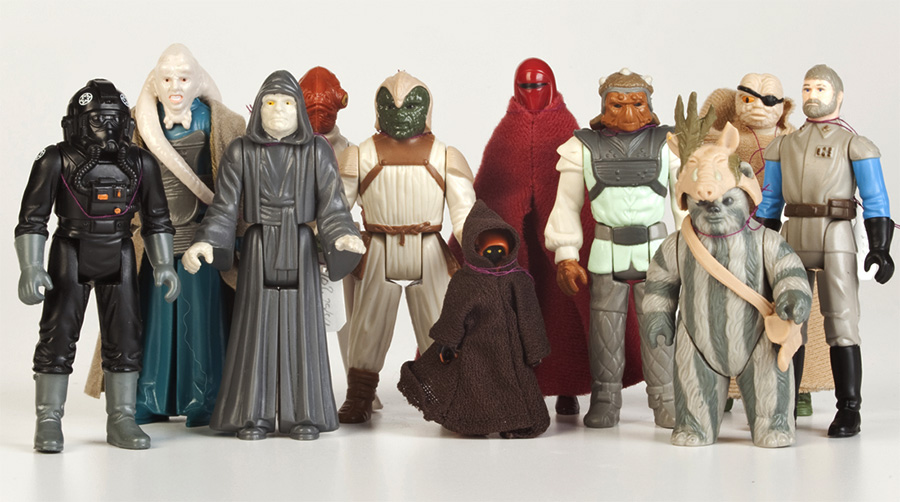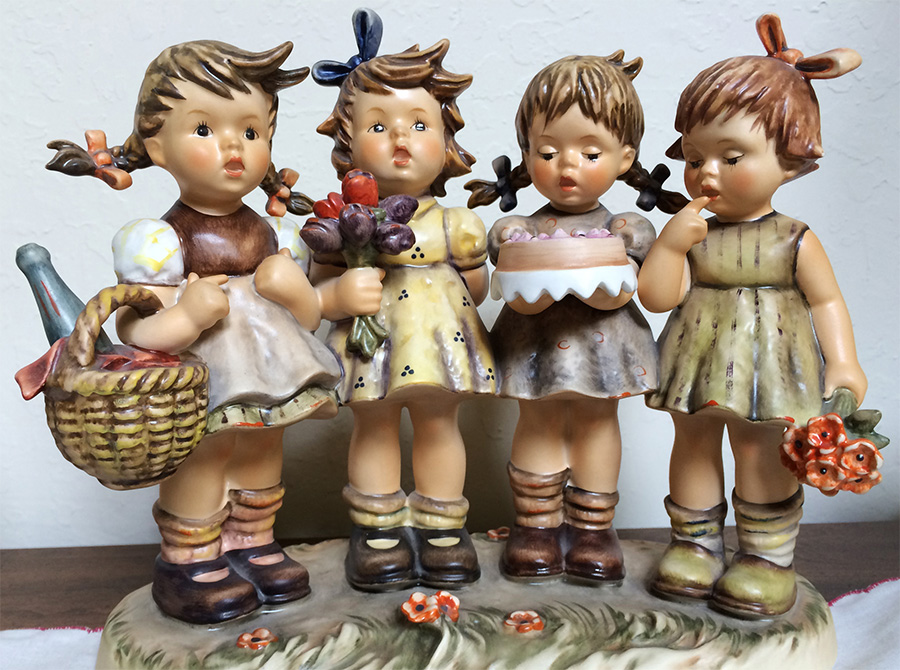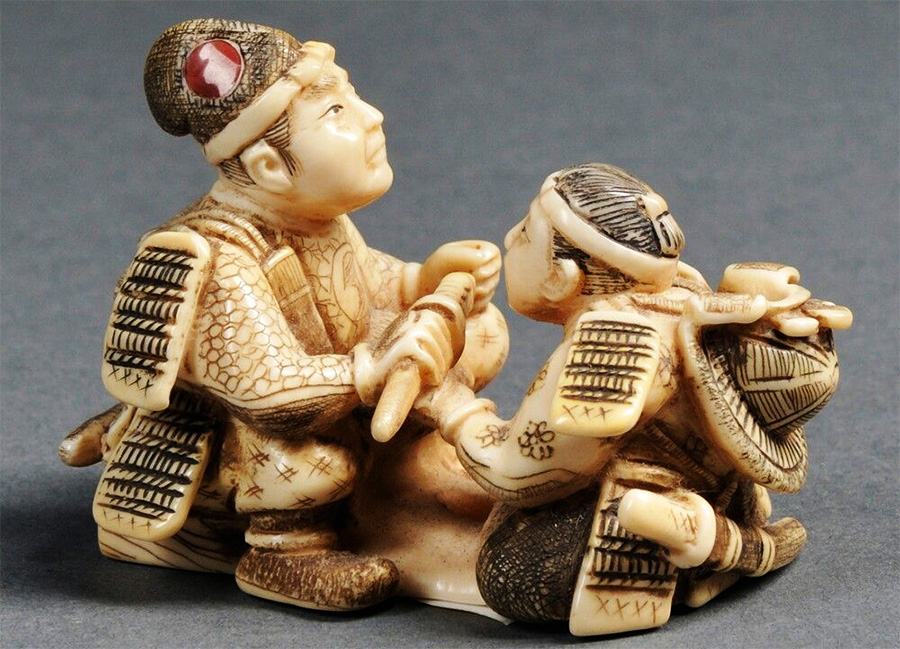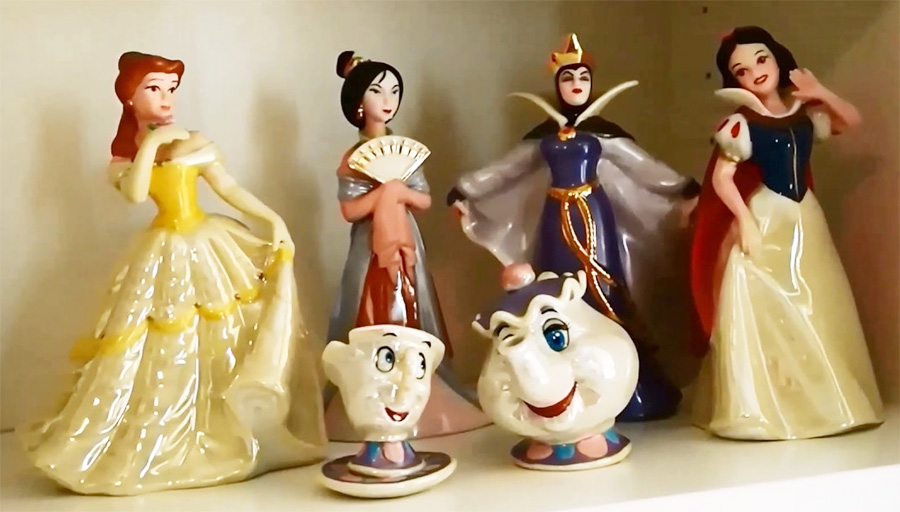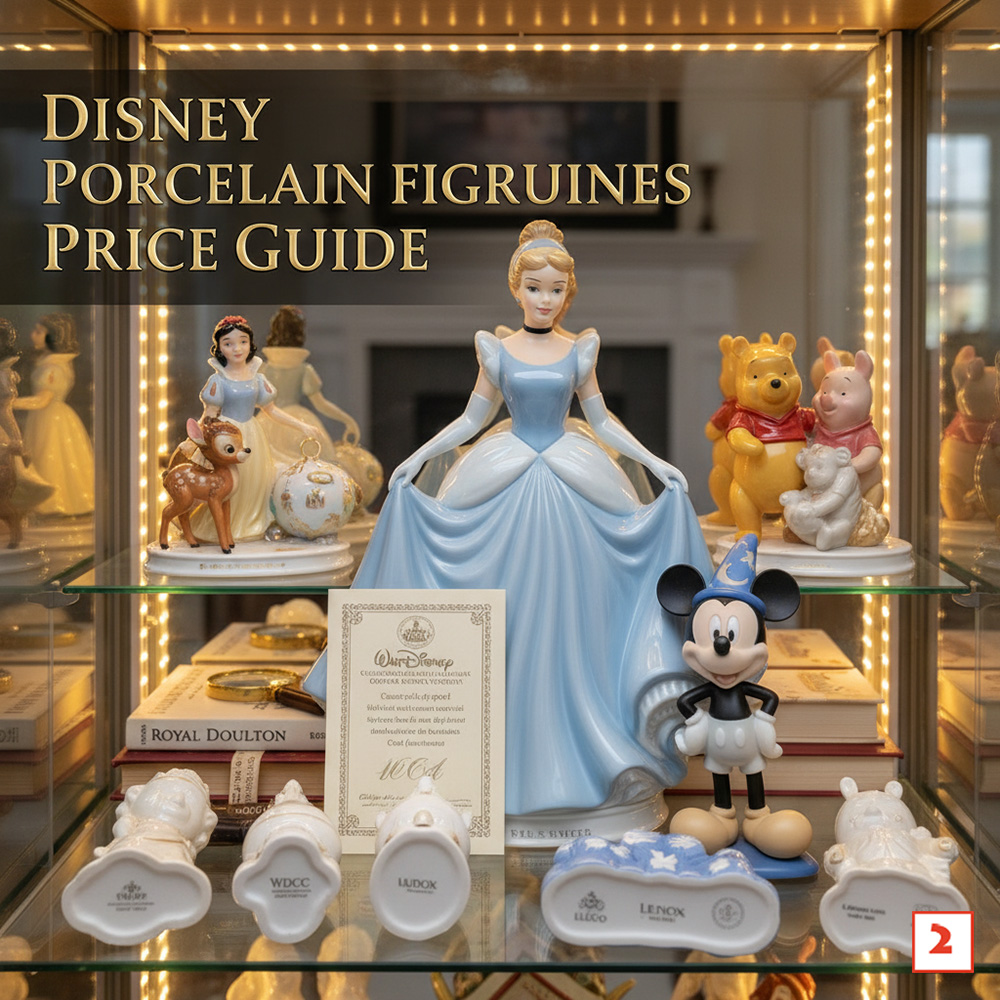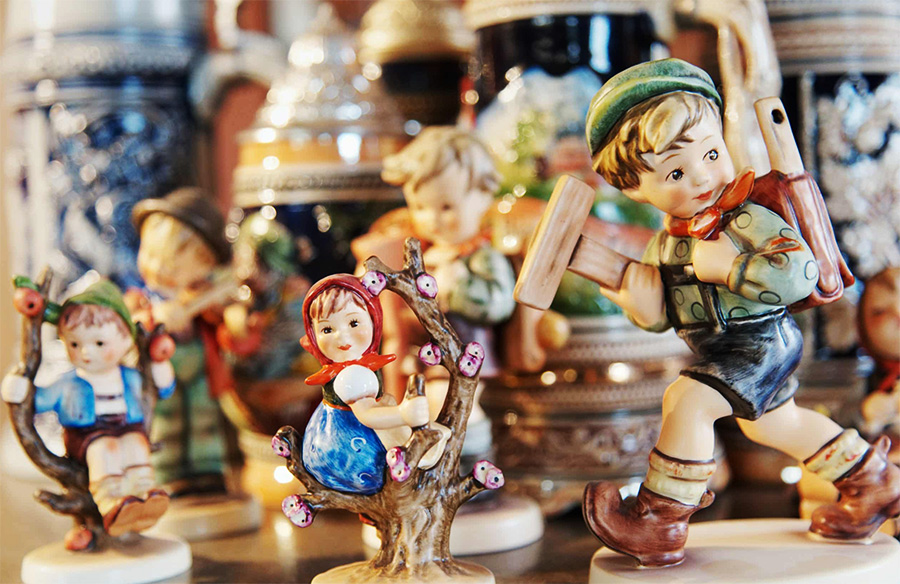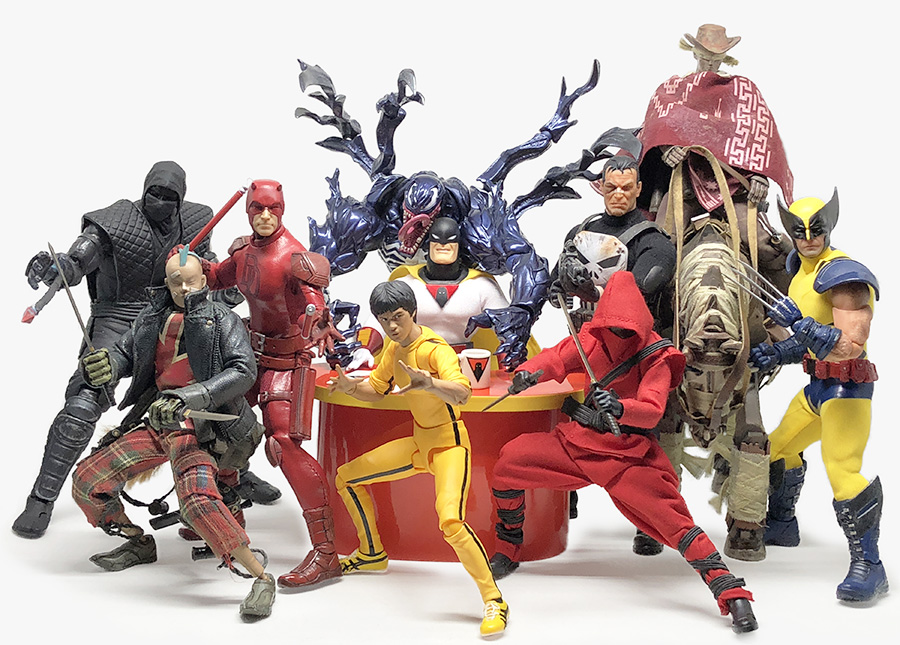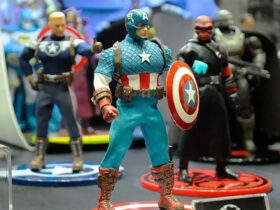For decades, the magic of Disney has been captured not just on screen, but in the delicate, timeless beauty of porcelain. From Snow White’s gentle smile to Mickey’s cheerful pose, Disney porcelain figurines represent a tangible link to childhood, artistry, and cinematic history. For collectors, these pieces are more than decorations; they are investments, heirlooms, and prized possessions.
But how do you determine the value of a Disney porcelain figurine? A “price guide” for these collectibles is not a static list but a dynamic understanding of brands, condition, rarity, and market trends. This comprehensive guide will walk you through the history of the most famous manufacturers, the key factors that determine a figurine’s price, and how you can accurately value your own collection.
Understanding Value: The 5 Key Factors
Before looking at specific brands, it’s crucial to understand what makes one figurine worth $50 and another worth $5,000. The value of any Disney porcelain piece is determined by a combination of these five factors.
- Manufacturer & Markings: The maker is paramount. A figurine from a high-end Spanish porcelain house like Lladró will inherently have a different value proposition than a mass-market piece. The bottom of your figurine holds the most important clue: the backstamp or manufacturer’s mark. This logo identifies the maker (e.g., WDCC, Lenox, Royal Doulton) and can often help date the piece.
- Condition: This is the most critical factor. In the world of porcelain, “mint condition” is the gold standard.
- Mint: The piece is flawless, as it was the day it left the factory.
- Near Mint: May have a tiny, almost invisible flaw.
- Good: May have minor crazing (a fine network of cracks in the glaze), slight paint wear, or a very small, non-distracting chip.
- Damaged: Any piece with significant chips, cracks, breaks, or botched repairs. A single chip or crack can reduce a figurine’s value by 50-90%. A broken-and-repaired piece, even if done well, will only ever be worth a fraction of its mint-condition counterpart.
- Original Packaging & Documentation: Serious collectors demand the complete package. The presence of the original box, foam inserts, and especially the Certificate of Authenticity (COA) can dramatically increase a figurine’s value. For many collectors, particularly of Walt Disney Classics Collection (WDCC) pieces, an item without its COA and box is considered “incomplete” and will sell for a significant discount.
- Rarity & Edition Size: Rarity is driven by several factors:
- Limited Editions: Pieces produced in a fixed number (e.g., “1,500 of 10,000”) are more desirable than open-edition pieces.
- Short Production Runs: Some figurines were only produced for a year or two before being “retired.”
- Special Events: Figurines released for specific anniversaries (e.t., Snow White‘s 50th) or exclusive to events (like D23 Expos or Disney theme parks) have a built-in scarcity.
- Artist Signatures: While animator-signed cels are common, figurines signed by the sculptor or a Disney Legend are rarer. For example, some WDCC pieces were signed by the animators who originally drew the characters (like Marc Davis or Ward Kimball), and these command a high premium.
- Market Demand: Like any collectible, value is subject to supply and demand. Frozen figurines may be incredibly popular now, while pieces from a less-remembered film like The Black Cauldron may have a smaller, more niche following. However, classic characters—Mickey Mouse, Cinderella, Snow White, and Winnie the Pooh—tend to have an evergreen demand that keeps their values stable and strong.
Major Manufacturers & Their Price Points
The name on the bottom of your figurine is the single best starting point for valuation. Here are the most significant manufacturers of Disney porcelain and what to expect from their collections.
1. Walt Disney Classics Collection (WDCC)
History (1992–2012): This is arguably the most famous and sought-after line of Disney figurines. Produced by Disney itself, the WDCC was a premium line dedicated to recreating iconic film moments with unparalleled accuracy. Each piece was crafted from porcelain and featured a backstamp indicating its production year. Many pieces were part of “scenes” and included special touches like inset crystals, bronze, or 14k gold paint.
What to Look For:
- Backstamp: The mark on the bottom is key. It will include the WDCC logo and a symbol representing the production year (e.g., a music stand for 1995, the Sorcerer’s Hat for 2000). The first-year mark of a piece is often the most desirable.
- Collector’s Society: The WDCC had a members-only club. Pieces exclusive to members (like “Dumbo, Simply Adorable”) or a special “Animator’s Choice” series are highly valued.
- COA & Box: A complete set is essential for top value.
Price Guide (Secondary Market Estimates):
- Common Open-Edition Pieces: $50 – $150 (e.g., Gus and Jaq from Cinderella, Thumper from Bambi)
- Members-Only/Special Releases: $150 – $400 (e.g., “Minding the Master” Cinderella, “Jaq and Gus in Sewing Basket”)
- Large, Complex, or Limited-Edition Pieces: $400 – $1,200+ (e.g., “A Lovely Dress for Cinderelly,” “The Mad Tea Party”)
- Signature & “Grail” Pieces: $1,500 – $5,000+ (e.g., “Cinderella’s Dress” signed by Marc Davis, “The Delivery Boy” signed by animators)
2. Lladró
History: The renowned Spanish porcelain company Lladró is famous for its smooth, pastel-colored, and emotionally resonant sculptures. Their partnership with Disney has produced some of the most elegant and expensive Disney figurines on the market. These are less about cartoonish accuracy and more about interpreting the characters through Lladró’s signature artistic lens.
What to Look For:
- Lladró Backstamp: The distinctive blue Lladró “flower” logo is always present.
- Finish: Most are the classic pastel-glaze finish, but some are “matte” or part of the “grec” (unglazed) line.
- Limited Editions: Many of Lladró’s most impressive Disney pieces are large, complex, and produced in very limited numbers.
Price Guide (Retail & Secondary Market Estimates):
- Small Figures (Dwarfs, etc.): $400 – $600 (e.g., “Dopey,” “Grumpy”)
- Medium Classic Characters: $500 – $900 (e.g., “Minnie Mouse,” “Snow White,” “Bambi”)
- Large or Deluxe Figures: $1,000 – $4,000 (e.g., “Cinderella’s Arrival,” “Mickey Mouse Sorcerer’s Apprentice”)
- High Porcelain (Gres) & Limited Editions: $5,000 – $40,000+ (e.g., The limited-edition “Fantasia” centaurette, or the massive “Cinderella’s Castle”)
3. Lenox
History: A premier American manufacturer of fine china, Lenox has been a Disney partner for decades. Their figurines are known for their creamy ivory porcelain, delicate hand-painting, and frequent use of 24k gold accents. Lenox produces a wide range of collectibles, from Christmas ornaments to full-size statues and Disney princess collections.
What to Look For:
- Lenox & Disney Backstamp: Look for the gold Lenox logo alongside the Disney copyright.
- Ivory Porcelain: The classic Lenox “look” is a soft, off-white porcelain, distinct from the pure white of many other brands.
- Collection Series: Popular lines include the “Disney Showcase” and annual holiday-themed pieces.
Price Guide (Retail & Secondary Market Estimates):
- Small Figures & Ornaments: $25 – $75 (e.g., “Mickey’s Christmas Carol” ornament, “Tinker Bell’s Magical Gift”)
- Medium Princess Figures: $80 – $200 (e.g., “Snow White’s Song,” “Belle’s Enchanted Gown”)
- Large or Complex Pieces: $250 – $600+ (e.g., “Mickey and Minnie’s Wedding,” “Cinderella’s Grand Arrival” figurine)
4. Royal Doulton (and Beswick)
History: The esteemed British company Royal Doulton has a long history with Disney. In 1969, they acquired Beswick, a company that had already been producing Disney figurines (including Snow White and Bambi) since the 1950s. Royal Doulton continued and expanded these lines, creating collections known for their character-accurate details and rich, vibrant glazes.
What to Look For:
- Backstamps: You will find a variety of marks, including “Beswick,” “John Beswick,” and “Royal Doulton.” Early Beswick pieces are often highly prized by collectors.
- Winnie the Pooh: Royal Doulton’s Winnie the Pooh collection is perhaps its most beloved, with dozens of figurines capturing the charm of the A.A. Milne illustrations.
- Princess & Classic Figures: Their princess line and Snow White and the Seven Dwarfs figures are also very popular.
Price Guide (Secondary Market Estimates):
- Small Winnie the Pooh Figures: $40 – $100 (e.g., “Pooh and Piglet, ‘A Sticky Situation'”)
- Classic Characters (Mickey, Donald): $75 – $150
- Princess Figures: $100 – $250 (e.g., “Cinderella, ‘A Moment in Time'”)
- Large or Retired Figures: $250 – $500+ (e.g., “Belle, ‘The Enchanted Rose'”)
- Early Beswick-Marked Pieces: These can be very valuable, with some Snow White figures fetching $300 – $600 depending on condition.
5. Goebel
History: The German company Goebel, most famous for producing M.I. Hummel figurines, also had a license to create Disney pieces. From the 1950s onwards, they produced a range of classic characters. These are often smaller than pieces from other brands and have a distinct, often “cutesy” Hummel-like aesthetic.
What to Look For:
- Goebel Mark: Look for the Goebel “Bee” mark or “W. Germany” stamp alongside a Disney copyright.
- Character Style: The styling is often softer and more rounded than other manufacturers.
- Rarity: Early Goebel Disney pieces from the 1950s are rare and highly sought after by vintage collectors.
Price Guide (Secondary Market Estimates):
- Common 1980s-90s Figures: $25 – $75 (e.g., small Mickey Mouse, Donald Duck)
- Rare 1950s-60s Figures: $100 – $350+ (e.g., early Bambi or Pinocchio characters)
Other Notable Makers
- Jim Shore (Enesco): While not typically porcelain (most are stone resin), Jim Shore’s Disney Traditions line is immensely popular. His folk-art style with quilt patterns is unmistakable. Most pieces trade in the $40 – $150 range.
- Giuseppe Armani (Florence Sculture d’Arte): These high-end Italian sculptures (again, often cold-cast porcelain or resin) are known for their large size and dramatic, lifelike poses. Limited editions can be worth $500 – $2,000+.
- Arribas Brothers: Sold primarily in Disney parks, these are figurines and sculptures made of Swarovski crystal, not porcelain. They are a different category of collectible but often grouped with high-end figurines.
How to Find the Value of Your Specific Figurine
Now that you’ve identified the manufacturer and assessed the condition, you can pinpoint a realistic value.
- Identify the Piece: Use the backstamp and any markings to identify the manufacturer. Look for a model number or name (e.g., “Cinderella ‘A Dream is a Wish…'” or “HN3677”).
- Go to eBay: This is the most powerful tool for real-world valuation.
- Search for your figurine using the manufacturer, character, and model name.
- Crucially, do not look at active “For Sale” listings. Sellers can ask for any price.
- On the left-hand menu, scroll down and check the box for “Sold Items” or “Completed Items.” This will show you what people have actually paid for the item in recent months.
- Analyze the “Sold” Listings: Look at 5-10 “sold” examples.
- Did the $200 figurine sell with its original box and COA?
- Did the $75 version of the same piece have “no box” and “a small chip on the finger”? This comparison will give you a very accurate price range for your exact item in its exact condition.
- Check Auction Sites: For very rare or high-end pieces (like large Lladró or signed WDCC lots), check the archives of sites like LiveAuctioneers and Heritage Auctions. These will show you what serious collectors have paid in a formal auction setting.
- Consult Replacement Sites: Sites like Replacements, Ltd. list porcelain for sale. Note that their prices are retail replacement values—the cost to buy the item from them—and will almost always be higher than what you could get selling it yourself on the secondary market. Use it as a high-end reference, not a realistic sales price.
Spotting Fakes and Authenticating Your Collection
As with any valuable collectible, fakes exist. Here’s how to protect yourself:
- Check the Backstamp: This is the #1 defense. Fakes often have blurry, misspelled, or missing logos. Research what the real backstamp for that brand and era should look like.
- Examine the Paint Quality: Authentic pieces from Lenox, Lladró, or WDCC will have crisp, perfect paint lines. Fakes often have sloppy paint, colors that bleed, or a “muddy” appearance.
- Look at the Face: The face is the hardest part to get right. On a fake, Mickey’s eyes might be slightly “off,” or Cinderella’s smile might look more like a smirk. Compare it to official photos online.
- Feel the Weight and Quality: Genuine porcelain has a certain weight and a smooth, cool feel. Fakes may feel lighter, chalky, or be made of a cheaper resin or ceramic.
- Demand the COA and Box: For modern pieces (especially WDCC), the absence of a COA and box is a major red flag, as they are easily separated from fakes.
Caring For and Appraising Your Collection
A well-cared-for collection is a valuable one.
- Display: Keep figurines out of direct sunlight, which can fade paint over time. Use enclosed glass cabinets to protect them from dust and accidental knocks.
- Cleaning: Dust gently with a soft, clean makeup brush. For grime, use a very soft cloth slightly dampened with water. Never use harsh chemicals or submerged pieces in water.
- Storage: If you must store them, use their original boxes. If you don’t have them, wrap each piece generously in bubble wrap and place it in a sturdy plastic bin, ensuring pieces don’t knock against each other.
Getting a Formal Appraisal: If you have a very large collection or believe you own a particularly rare piece (worth over $1,000), it may be worth a formal appraisal for insurance purposes. You can contact an appraiser certified by the Appraisers Association of America (AAA) or the International Society of Appraisers (ISA), specifically one who specializes in “collectibles” or “decorative arts.”
For most collections, however, the “self-appraisal” method of using eBay’s sold listings will give you the most accurate, real-world “fair market value” for your magical treasures.

